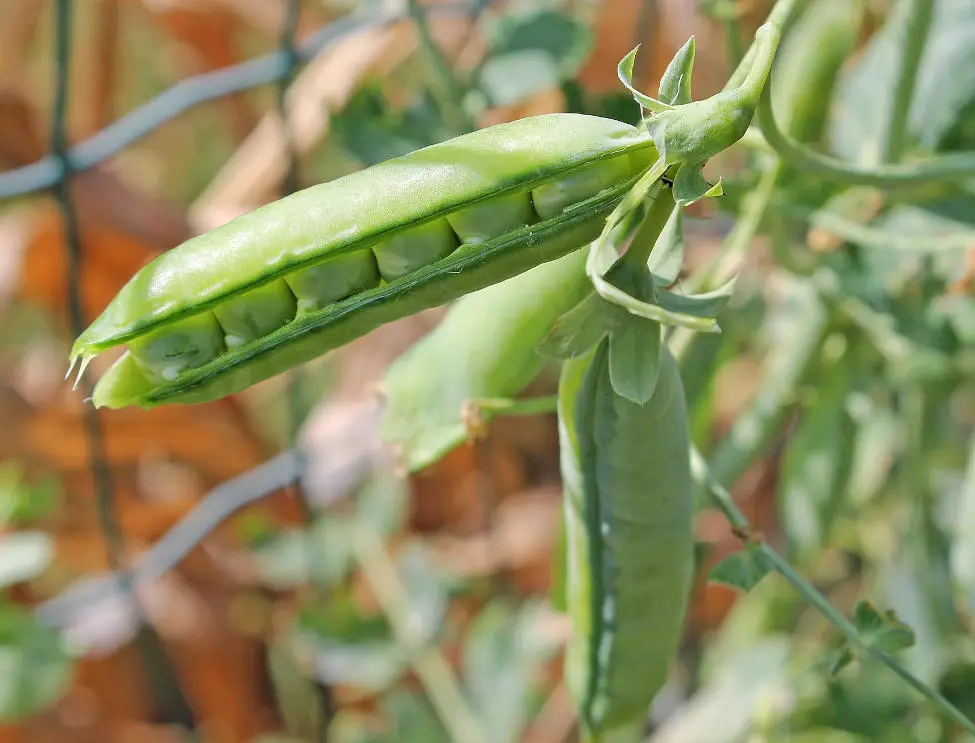Growing peas in containers is a fantastic way to enjoy fresh, homegrown produce even if you have limited garden space. Peas are relatively easy to grow and can thrive in containers with the right care and attention. In this guide, we’ll cover everything you need to know to successfully grow peas in containers, from understanding their basic needs to harvesting and storage.
Basic Needs: Creating the Ideal Environment for Peas
Peas have specific needs that must be met to ensure healthy growth. Firstly, they require a nutrient-rich, well-draining soil with a pH level between 6.0 and 7.5. Choose a container that is at least 30 cm deep to accommodate the root system. Make sure the container has adequate drainage holes to prevent waterlogging, which can lead to root rot. Peas prefer cooler temperatures, so place the container in a location that receives full sun for at least 6 hours a day but is protected from intense afternoon heat.
Growing Techniques: Planting and Caring for Your Peas
Start by filling your container with high-quality potting mix, leaving about 2.5 cm of space from the top. Sow pea seeds directly into the soil, spacing them about 5 cm apart and 2.5 cm deep. Water the soil thoroughly after planting and keep it consistently moist, but not waterlogged, throughout the growing season.
Peas are climbing plants, so provide support by installing a trellis or stakes in the container. This will help the plants grow vertically, saving space and promoting better air circulation. As the plants grow, gently guide the vines to the support structure. Fertilize the peas with a balanced fertilizer every three to four weeks to encourage healthy growth.
Problem-Solving: Overcoming Common Challenges
While peas are generally hardy, they can face certain challenges. One common
issue is poor germination, which can occur if the soil is too cold or too wet. To improve germination rates, plant peas when the soil temperature is at least 10°C and avoid overwatering. If you experience slow growth or yellowing leaves, it may be due to nutrient deficiencies. Ensure you are using a well-balanced fertilizer and consider supplementing it with compost or organic matter to enrich the soil.
Pests such as aphids and pea weevils can also be problematic. Regularly inspect your plants for signs of pest infestations and use natural pest control methods such as insecticidal soap or neem oil if needed. Good air circulation and proper spacing can help prevent fungal diseases like powdery mildew.
Harvesting and Storage: Enjoying Your Homegrown Peas
Peas are typically ready for harvest about 60-70 days after planting, depending on the variety. Harvest peas when the pods are plump but still tender. Snap peas should be harvested when the pods are full but before the seeds inside begin to bulge. Snow peas should be picked when the pods are flat and the seeds are just beginning to form.
To harvest, simply hold the vine with one hand and gently pull the pod off with the other to avoid damaging the plant. Freshly harvested peas can be stored in the refrigerator for up to a week. For longer storage, blanch the peas in boiling water for a couple of minutes, then transfer them to an ice bath to cool. Once cooled, drain and freeze the peas in airtight containers or freezer bags.
Tips: Maximizing Your Pea Harvest
Here are some additional tips to help you get the most out of your container-grown peas:
Choose the right variety: Dwarf or bush varieties of peas are better suited for container gardening as they require less support and space compared to climbing varieties. Consistent watering: Keep the soil consistently moist but avoid waterlogging. Mulching can help retain moisture and regulate soil temperature. Successive planting: To enjoy a continuous harvest, sow seeds in successive plantings every two to three weeks during the growing season.
The Rewards of Growing Peas in Containers
Growing peas in containers is a rewarding and practical way to enjoy fresh, homegrown produce even with limited space. By understanding their basic needs, employing effective growing techniques, and addressing common challenges, you can successfully cultivate a bountiful harvest of peas. With a little care and attention, you’ll be able to savour the sweet, crisp taste of homegrown peas straight from your patio or balcony.
